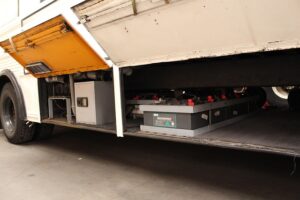Register Car in California: Gather Docs, Verify VIN, Pay Fees
Looking to register your car in California? This comprehensive guide breaks down the process step-by-step. From understanding key requirements, like ensuring your vehicle’s title and identifying its V…….

Looking to register your car in California? This comprehensive guide breaks down the process step-by-step. From understanding key requirements, like ensuring your vehicle’s title and identifying its Vehicle Identification Number (VIN), to gathering essential documents and paying registration fees, we cover it all. Learn how to visit a DMV or utilize online services efficiently. A correct VIN verification is crucial; we’ll show you why. Master the art of car registration in California with our expert tips and easy-to-follow instructions, including helpful insights from a trusted dmv vin verifier.
- Understand California Car Registration Requirements
- Gather Necessary Documents for Car Registration
- Visit a DMV or Use Online Services for Registration
- Verify Vehicle Identification Number (VIN) Accuracy
- Pay Car Registration Fees and Receive Your Plate
Understand California Car Registration Requirements

Before registering your car in California, it’s crucial to understand the state’s specific requirements. The California Department of Motor Vehicles (DMV) mandates that all vehicles, regardless of age or type, be registered and have a valid inspection certificate. This process involves several steps, including verifying the vehicle identification number (VIN).
A reliable method for VIN verification is through a mobile vin inspection or mobile vin verifier. These services allow you to confirm your car’s history and ensure it meets safety standards by checking against national databases. By utilizing these modern tools, you can streamline the registration process, making it more convenient and efficient.
Gather Necessary Documents for Car Registration

Before you start the registration process, it’s crucial to gather all the essential documents required by the California Department of Motor Vehicles (DMV). This includes your vehicle’s registration papers from the previous owner, a valid driver’s license, proof of insurance, and identification with your current address. Additionally, you’ll need to have your Vehicle Identification Number (VIN) verified. Utilize a trusted DMV VIN verifier to ensure the vehicle’s history is clear and it hasn’t been reported as stolen or had any outstanding issues.
One convenient option to streamline this process is through mobile VIN inspection and verification services. These allow you to quickly check your car’s history from the comfort of your home or even while on the go, making the initial steps of registration more efficient.
Visit a DMV or Use Online Services for Registration

You have two convenient options when it comes to registering your car in California: visit a DMV office or use online services. If you prefer face-to-face interaction, heading to a local Department of Motor Vehicles (DMV) office is the way to go. Bring all necessary documents, including proof of ownership and identification, and fill out the registration forms provided by the DMV.
For those who prefer a more digital approach, California’s DMV offers online registration services that include a mobile VIN verifier. This allows you to verify your vehicle’s Vehicle Identification Number (VIN) from the comfort of your home. Once your VIN is verified, you can complete the registration process online, saving time and effort. Alternatively, consider using a mobile VIN inspection or verification service for an even smoother experience, eliminating the need to visit any office at all.
Verify Vehicle Identification Number (VIN) Accuracy

Before registering your car in California, ensuring the Vehicle Identification Number (VIN) is accurate is a crucial step. The VIN is unique to each vehicle and serves as a digital fingerprint, making it critical for identifying and tracking cars. To verify the VIN, you can utilize a DMV-approved vin verifier or mobile vin inspection tool that provides instant, reliable results. These tools cross-reference your VIN with state records to confirm its authenticity and ensure there are no discrepancies.
A common issue arises when the VIN on the vehicle’s documentation doesn’t match the one inscribed on the car itself. This could be due to errors in record-keeping or even fraudulent activities. Using a mobile vin verifier can help you detect such issues early on, preventing potential problems with registration and ensuring a smooth process.
Pay Car Registration Fees and Receive Your Plate

After you’ve gathered all the necessary documents and confirmed your vehicle’s eligibility for registration, it’s time to pay the car registration fees. These fees vary based on factors like the type of vehicle, its weight, and emission standards. You can typically pay online or in-person at a California DMV (Department of Motor Vehicles) office using a credit card, debit card, or check. Once your payment is processed, you’ll receive your license plate(s).
California uses a unique identifier known as the Vehicle Identification Number (VIN) to track vehicle ownership and registration. Before receiving your plates, a DMV VIN verifier might be used for inspection to ensure the VIN matches the vehicle and isn’t reported as stolen or in any other way compromised. With a mobile VIN verifier or through a vin inspection, you can verify the VIN’s authenticity, adding an extra layer of security to the registration process.
Registering your car in California is a straightforward process that ensures your vehicle is legally recognized on state roads. By understanding the requirements, gathering the right documents, and either visiting a DMV or utilizing online services, you can efficiently complete the registration. A crucial step is verifying the Vehicle Identification Number (VIN) to maintain accuracy, which aligns with recommendations from top dmv vin verifiers. After paying the necessary fees, you’ll receive your unique license plate, marking your vehicle’s official entry into California’s transportation network.







